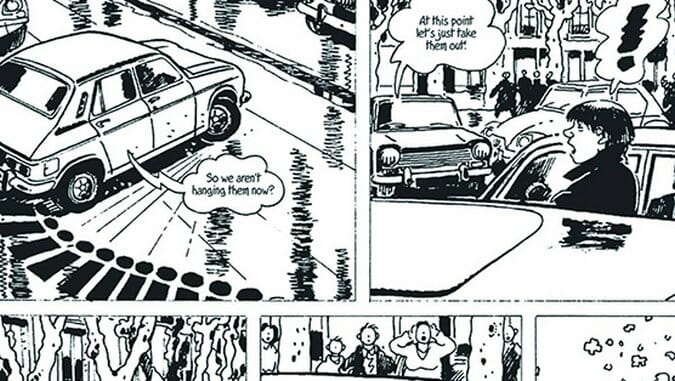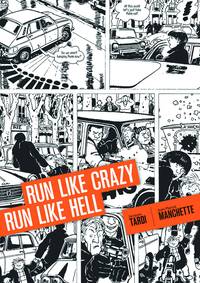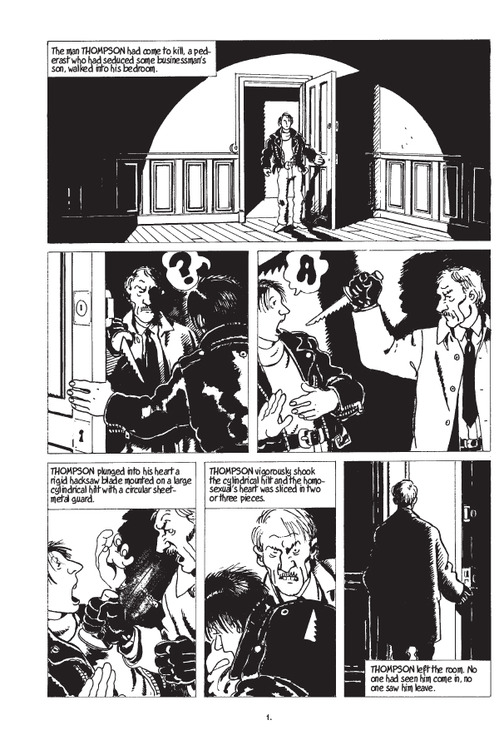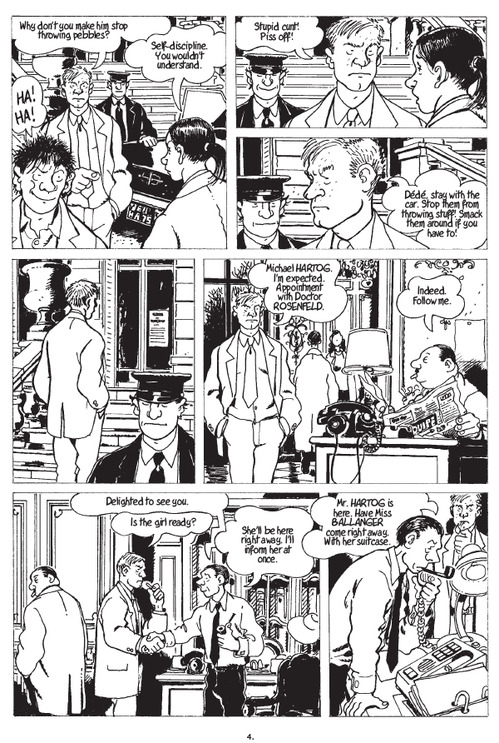Run Like Crazy Run Like Hell by Jean-Patrick Manchette & Jacques Tardi

Writer: Jean-Patrick Manchette
Translator: Doug Headline
Artist: Jacques Tardi
Publisher: Fantagraphics
Release Date: February 8, 2015
Based on the 1972 novel Ô dingos, ô châteaux !, Run Like Crazy Run Like Hell is cartoonist Jacques Tardi’s third adaptation of a Jean-Patrick Manchette book, and the graphic novel’s origins are apparent on the page. Tardi leaves the original work’s prosaic narration intact and allows it to carry much of the storytelling. Even with this approach, however, scenes soon fly past with startling rapidity, as the plot proves exceptionally lean and propulsive.
The book concerns Julie — a new nanny to a young boy — and Thompson — a hitman pursuing her to satiate his physical and psychological dependency on murder. Tardi opens with a languid, timid pace, obfuscating the book’s eventual plot and tone. The beginning creates a space that is almost comically, stereotypically French: gliding along at its own pace, more concerned with intonation than story. But, looking back on the entire book, that halcyon prelude resembles the seconds it takes for the sizzling fuse of a bottle rocket to wind down: 20 pages in, the story coalesces and takes off at a concussive, thumping pace. The closest point of reference is Paul Thomas Anderson’s Scientology study, The Master: inconsequential scenes parallel the listless, meandering nature of their subject’s life and then reorganize accordingly the moment that subject begins to find purpose. That said, Tardi’s work directs its anarchic impulse more forcefully than Anderson’s.
But that controlled chaos makes Run Like Crazy Run Like Hell such an engaging and compelling read. The characters aren’t priority here, and they’re given little interiority besides motivations. Primacy of plot can get boring quick, but Tardi’s skillful application of technique and style elevates the book from the morass of pulp homogeny.
The aforementioned narration isn’t as stripped-down as the kind that Richard Stark made famous in works like The Hunter (“When a fresh-faced guy in a Chevy offered him a lift, Parker told him to go to hell”), but there’s a precision and meter to it that makes it a useful tool in the hands of Tardi. He uses it to shore up gaps in the visual storytelling, keeping the book svelte and manageable at 100-ish pages. Run Like Crazy Run Like Hell is noticeably text-heavy, but unlike some other less-accomplished writers, Tardi’s reliance on text doesn’t feel like a crutch, or an attempt to bridge the gap between comics and prose. It’s very purposeful — a far cry from the overwrought, purple prose of Scott Snyder, early Alan Moore or Mike Carey on a bad day.
-

-

-

-

-

-

-

-

-

-

-

-

-

-

-

-

-

-

-

-

-

-

-

-

-

-

-

-

-

-

-

-

-

-

-

-

-

-

-

-














































